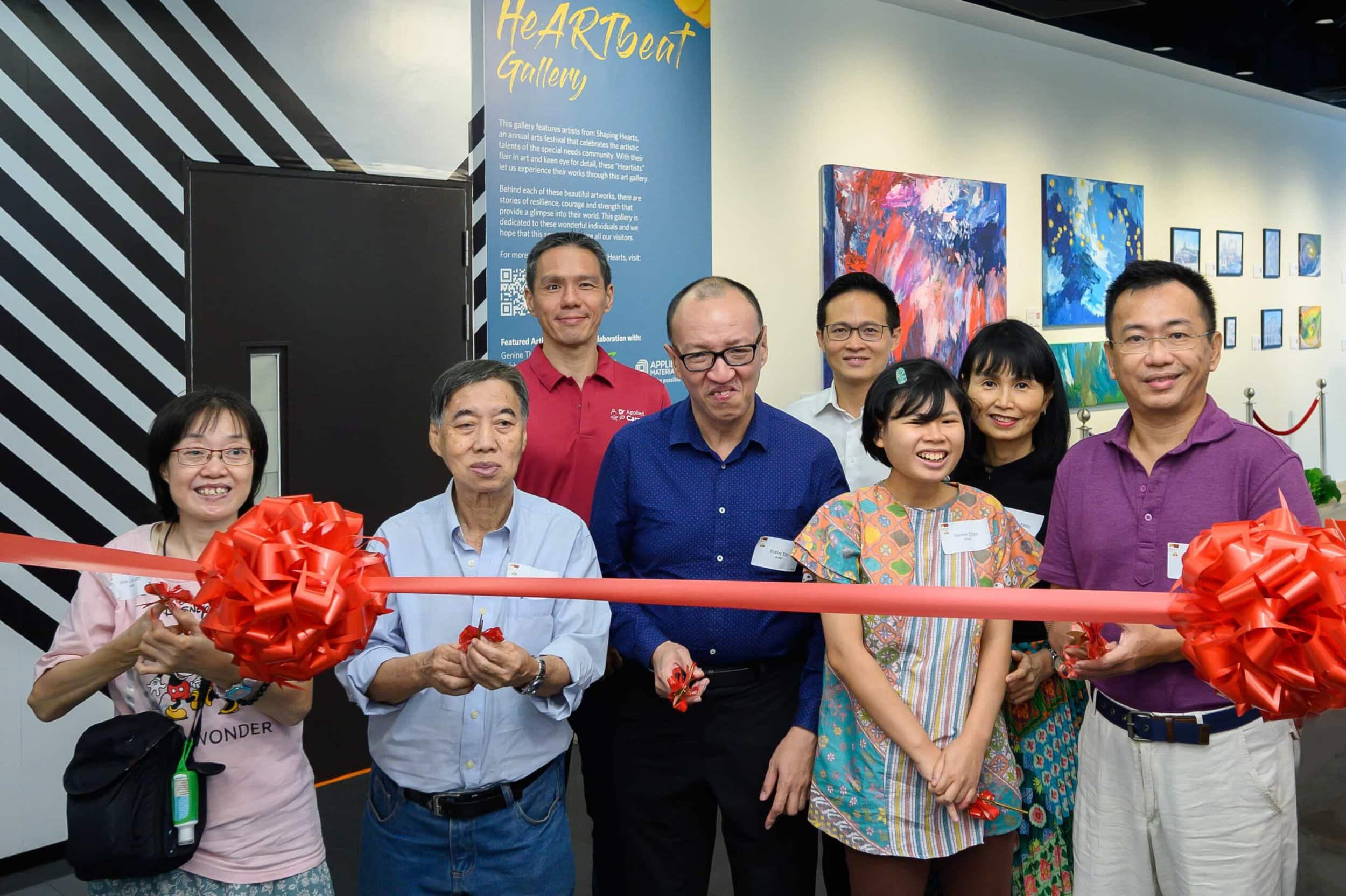Against a dark beige backdrop, a large navy blue roof with an ochre yellow tinge catches my eye. Beneath a tarpaulin canopy, I meet the subjects of Ng Siang Hoi’s Barber — a young boy, wrapped in a nondescript grey sheet, receives a haircut from a barber in a pair of parakeet-green slacks. The canopy creates a cloistered world within a world, taking us back to a scene of the twentieth century, where roadside barbers often plied their trade in back lanes for affordable prices.

In February this year, Barber was featured at the HeARTbeat Gallery as part of the sixth Shaping Hearts festival. Organised annually by the North East Community Development Council (NECDC), this inclusive arts festival aims to raise awareness and support for artists with disabilities in the visual and performing arts.
Located in the office lobby of semiconductor company Applied Materials South East Asia (AMSEA), the HeARTbeat Gallery — a partnership between AMSEA and the NECDC — marks the first time the festival has presented an office art gallery. The 16 artworks on show were auctioned, with all proceeds given to the five contributing artists and the Shaping Hearts programme.
Behind Barber
The 78-year-old Ng, who began painting at the age of 10, started work on the painting in January this year and took about 12 hours in total to complete it. Aside from images of old Singapore barbershops, he drew upon his memories of the barbershop atmosphere — the rhythmic snapping of the scissors, the buzz of electric clippers, and the chatter amongst barbers and customers.
First, he sketched out a basic composition, outlining key elements like the barber chair, mirror, customer, and barber himself. Next, he used washes of colour to establish the main forms, before layering paint to create more depth and dimension — relying on intuition and lived experience to inform his colour choices. In the final stages, which require a careful eye for detail, he enhanced the painting’s realism by adding highlights and shadows.
“In those days,” says Ng, “visiting the barber was not just about getting a haircut — it was a chance to connect with neighbours and catch up on the latest news and gossip.” In his art practice, he draws from images of 1960s–70s Singapore and aims to capture everyday street activities, objects, and landscapes. While these stories may not be central to the larger narrative of Singaporean history, they are still significant in deepening our understanding of our nation.
Dreaming up the future
Ng highlights that artists with disabilities often face the misconception that disabilities limit one’s creativity. But, he wishes to “break down [the] barriers” disabled artists face. “These barriers,” he explains, “encompass physical accessibility issues, pervasive social stigmas and stereotypes, the lack of representation and opportunities, [and] limited access to resources and support.”
For example, Ng is a deaf artist who relies heavily on visual cues and gestures to convey his ideas and work with other artists. Yet, he occasionally runs into misunderstandings when trying to express complex concepts or emotions. Additionally, writing messages on platforms like WhatsApp poses a challenge, as he finds it difficult to navigate keypads. Such challenges may be difficult for non-disabled individuals who do not share the same lived experiences to fully appreciate, but I believe that they should be acknowledged and factored into the collaborative methods used by artists and art institutions.

Ng remains hopeful about Singapore’s attitudes towards inclusivity. He believes that there will be more initiatives like mentorship programmes and specialised training for disabled artists, which can also lead towards greater representation of their works in galleries and exhibitions. In the meantime, he continues to contribute to Singapore’s art scene — pushing it towards further awareness of the multilayered issues surrounding inclusivity for artists with disabilities — and to paint his paintings of old Singapore.
___________________________________
Header image: The launch of the Applied Materials HeARTbeat Gallery (Ng is second from the left). Image courtesy of Applied Materials.











